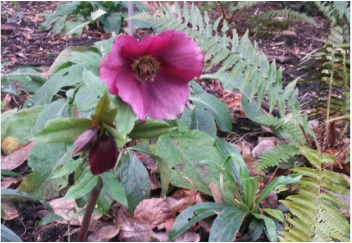
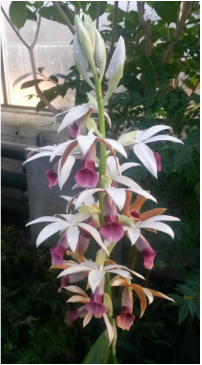
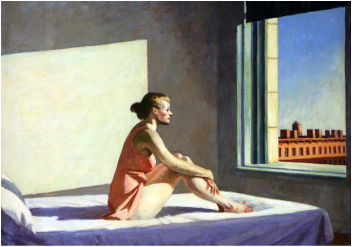 Edward Hopper: Morning Sun 1952
Edward Hopper: Morning Sun 1952 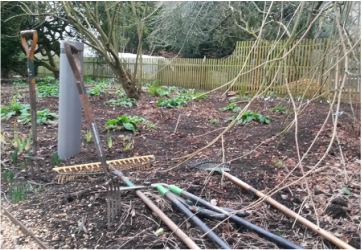
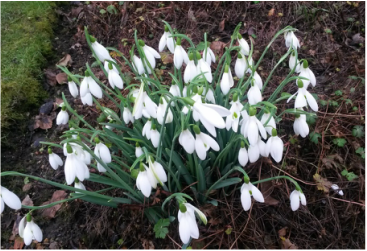
|
|
 A week or so of hard frosts and record lows, fingers aching with the cold: and suddenly I’m a child again, winter Sundays resting my feet on the hot pipes below the pews and risking the delicious agony of a too-fast thaw. Eyes stream, nose runs, but the sun keeps shining, and the garden glitters as the icing on leaves and stems melts. I am stopped in my tracks by a hellebore, a deep purplish-pink. Charmed by its open face and finely etched veins, I stop for a photo. Later, at home, a bit of digging reminds me that many hellebores (from the Greek ‘elein’ to injure and ‘bora’ food) are poisonous. Aside from the misleading ‘Christmas rose’ – in fact this is member of the Ranunculaceae or buttercup family – the Helleborus niger boasts other nicknames, including ‘Christ’s herb’, ‘Clove-tongue’ and ‘Bear’s foot’. Although the entire plant is toxic, hellebore poisoning is rare, and it has a history of medicinal use for mental disorders as well as for the treatment of lice.  Too cold to stand for long but the glasshouses provide a welcome respite. There’s a buzz in the air there as the garden prepares for next month's Orchid Festival. My planned glimpse behind the scenes doesn’t happen – what I hope is only a temporary entanglement in red tape – but I happen upon a taste of what is to come in the Tropical House, where a single stem of Phaius tankervilliae, ‘Swamp lily’ or ‘Swamp orchid’, rises with the grace of a dancer from the damp earth. Like the hellebore, this orchid has an embarrassment of names, including ‘Veiled orchid’, ‘Nun’s orchid’ and ‘Nun’s cap’, from its curved, white-backed upper sepal and petals. It’s widespread in India, China & Japan and south-east Asia and is also found in Australia, although there it is regarded as an endangered species. The plant was brought from China to the UK towards the end of the eighteenth century by John Fothergill, plant collector and botanist who was also known as a Quaker and philanthropist, and a doctor with an expertise in the sore throat. It was named by Joseph Banks for Lady Emma Tankerville, whose name derived from Tancarville in Normandy, giving the species name its variant spellings. Somehow I miss the scent - what one commentary describes as ‘delightfully fragrant’ – so I promise myself a return visit.  Edward Hopper: Morning Sun 1952 Edward Hopper: Morning Sun 1952 A day or two later, I’m back in the Botanics. A small white downy feather floats in slow motion onto my palm. From the café, I watch a magpie strut across the flags outside. In fact I’m only half present, since I’m plugged into Raymond Carver reading ‘What we talk about when we talk about love’ – or rather to an introduction, which describes Carver arriving for this 1983 radio recording of his story, ‘bulky as a bear’, wearing a reindeer sweater and carrying a pile of student papers he’s in the process of marking. Carver’s characters, according to Herbert Gold's introduction, work in saw-mills, repair appliances, deliver mail. The problems they face are basic. They live in nondescript houses, cheap motels, sometimes dry-out centres. Now Carver’s reading has started, and I’m surprised by the lightness of his voice, and the brisk pace of his narrative. I’ve been reading Olivia Laing’s account of why writers drink, and Carver is included in her study. And this connection in turn transports me to London, specifically the British Library yesterday evening, for Olivia’s compelling and disturbing talk and readings from her forthcoming book ‘The Lonely City’, which she describes as a 'roving cultural history of urban loneliness'. Today, in pale sun, I’m haunted by one anecdote: after the death of Manhattan resident Henry Darger, his room was found to be packed with paints and paper, journals and writings and canvases and collages, product of ‘decade after decade after decade…’ living unregarded in the middle of the city.  Later in the week I down tools and take the train to Ipswich for the launch of a series of classes run by the English National Ballet Dance for Parkinson’s programme. I know pretty much what to expect: I’ve taken part in a training course and a taster session, and seen the video so I’m familiar with the format, the lengthy seated warm-up, a progression to standing and then to a marching/travelling sequence, some partner work and some whole group interaction, finishing with a passing-a-movement circle sequence. And I’ve met several of the group before. Still, I’m not really looking forward to it. I’ve been vaguely out of sorts for a week or two, alternately fighting off the January blues and succumbing to them, with a queasy stomach and lots of aches and pains. I’m also feeling a stubborn resistance to being a member of a group defined by disease. Once there, buffeted along the river and onto the waterfront by a vigorous wind, the warm welcome and the excitement of the providers boost my mood. Two of our sequences in the class, including a partner-mirroring exercise, are performed to the slow movement of Mozart’s piano concerto – the Elvira Madigan theme – quite magical. There’s time for tea and talk afterwards, and I make friends. As I leave Jerwood House, high-flying gulls form black silhouettes against a sky that seems rinsed clean, only a few smudges of bruised cloud and a clear half moon.  In Cambridge it’s still unarguably January, with flurries of hail and sleet and the odd snowflake interrupting the watery sunshine. There’s a song for the season in tango, of course – isn’t there always? – which equates the ‘white veil’ of winter with the ‘cold winds of desolation’ gusting through the lonely heart. As so often, the melancholy of the lyrics is enriched by the lovely chocolaty caress of Roberto Maida’s voice in this 1937 recording. Still, January’s almost out for another year. I’m all geared up for February and a new dawn (listen out for the birds towards the end!), hoping to learn about orchids in a Thursday lunchtime festival tour in Cambridge. I'll also be spreading my wings to take a look behind the scenes at Kew and to listen to Tom Hart Dyke talk about an orchid hunt which went disastrously wrong.
0 Comments
Leave a Reply. |
At HomeAs Writer in Residence, thoughts from the garden Archives
October 2020
Categories |